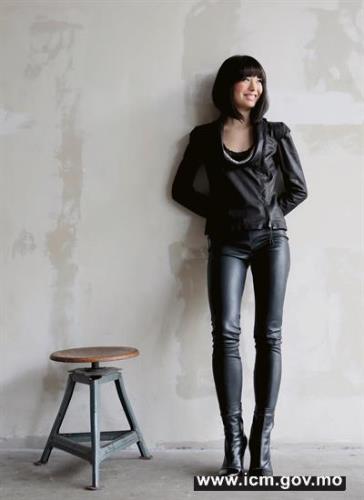A full time researcher in university and an amateur art commentator, Cheong obtained his master’s degree in Public Policy at Willy Brandt School of Public Policy at the University of Erfurt and is formerly a clarinettist of the Erfurt Philharmonic Orchestra in Germany. He loves classical music and now serves as conductor of the orchestra in Escola Choi Nong Chi Tai, by which he can connect art to everyday life. Cheong is also a book lover.

Solo pianist Alice Sara Ott Photo courtesy of Macao Orchestra
Recently, I attended Piano Encounter: Meet Alice presented by Macao Orchestra, and am overwhelmed by the humanistic visions of the performance that go well beyond artistic creation. I am not a personal acquaintance of Ung Vai Meng, former President of Cultural Affairs Bureau, but he certainly made a strong impression as a distinguished official in charge of cultural affairs. After all, it is quite rare for a government official to be much missed by the community when he leaves the service. At the end of the concert, Lü Jia, the conductor, gave his thanks to Ung. As an artist himself, Ung has put in a lot of efforts in promoting culture in Macao, and has gained much respect for his work among art practitioners. Lü expressed his gratitude with Schumann’s Kinderszenen which, coincidentally, is the same piece chosen by Vladimir Horowitz in Hamburg in 1987. The only difference is that this recent string performance offered a more sentimental interpretation to the musical piece, and conjured a powerful sense of nostalgia.
This concert in Macao showcased three lesser heard-of masterpieces by Schumann: Genoveva, Overture; Piano Concerto in A Minor, Opus 54 and Symphony No.2 in C Major, Opus 61. Schumann is known more for his vocal works. Surprisingly, it turns out that his overture for the opera has garnered a much stronger appeal than the musical itself. Schumann composed his Symphony No.2 in C Major, one of his symphonic quartets in ill-health. Piano Concerto in A Minor, Opus 54, performed by Alice Sara Ott, a solo pianist on the day, is Schumann’s one and only piano concerto. However, in order to publish the compositions, Schumann was obliged to add two more acts to his original single-movement Piano Concerto in A Minor, so as to meet the requirements. Indeed, he never achieved the breakthroughs that he hoped for in his creative journey, but his willingness to experiment is most admirable.
As his relationship with Clara became publicly known, Schumann went through a period of personal fulfilment when his masterpiece was revealed in 1845. The three-movement composition follows a traditional format, with a more dramatic and exhilarating overture, showcasing the interaction between piano and the clarinet, soft and gentle as the whispers between lovers. In the second part, the echo between the piano and the orchestra resembles a shepherd’s song. In the middle, the emphasis on the string element seems to embody a response to the piano.
Schumann’s composition reveals his passion for the clarinet, whose sound mediated by the wooden instrument evokes the warmth of human sentiments. The intense third part of the composition piece is filled with energy and music variation, bringing the entire performance to a classic conclusion. Compared to the more ethnic expressiveness of Tchaikovsky, Schumann’s music is not shadowed by suffering or pain. Instead, his music evokes genuine feelings. Unlike Beethoven’s, Schumann’s music is much more subdued and subtle. Understanding this, it is not hard to appreciate the strong appeal of Schumann’s vocal works.
At the end of the symphonic piece, Lü paid tribute to Ung. It is such an honour for a retiring government official to receive such affirmative applause in various occasions. This hard-won respect comes from Ung’s reverence and passion for the arts. While Lü and Ung are unable to communicate fluently with each other due to the linguistic barriers (given Ung’s less-than-proficient Putonghua), it is a revealing moment to witness their sentimental tears. Indeed, art transcends language in many ways. It is a genuine joy to see an artist returning to his creative path, and I look forward to seeing Ung’s creative output as a painter.